Unreal 5 Project: Fleshscape
-
Group Project (10)
-
Role: Lead level designer & game designer
-
8 Weeks
-
Unreal engine 5.1, Maya, Trello, Github
Documents
GDD:
2-pager:
Pillars (Read more in GDD)
-
Skill-based combat
-
Moral Dilemma
-
World building

On the first day of the project I sketched out some level ideas. The goal was simply to have a sketch that could inspire our storytelling, aesthetic and future iterations of our level moving forward. We knew we wanted a souls-like combat system with a focus on world-building and moral dilemma.

Level 1a - Basement floor (Sketch)
Goal is to slowly teach the mechanics but in an engaging way. Keeping the level linear.

Level 1b - Main floor (Sketch)
This purpose of this area is to give the player more agency to
experiment with their newly learnt mechanics.
We aimed for the game to convey a grim atmosphere, suggesting that the character's circumstances are inherently destined for failure.
In the level design, I used weenies to offer players a sense of hope, purpose and direction. This was essential within the challenging and bleak world of the game, ensuring a sense of direction and player engagement despite the difficult setting.
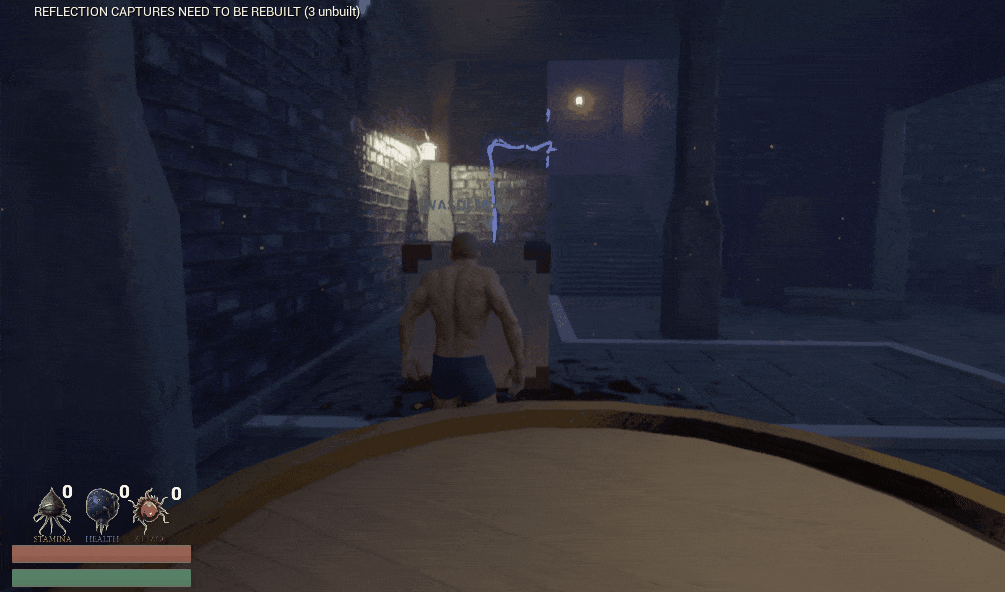
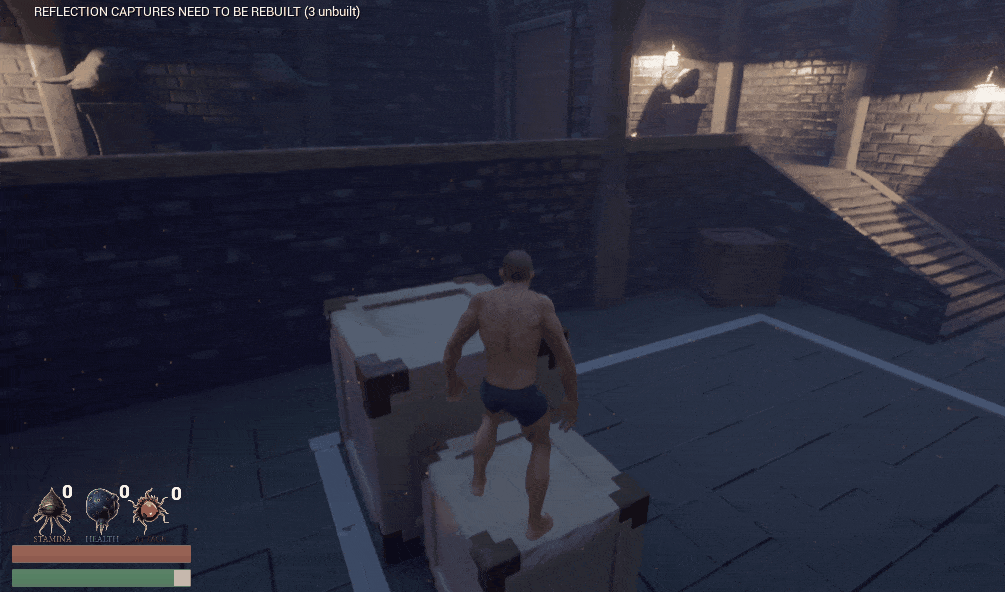
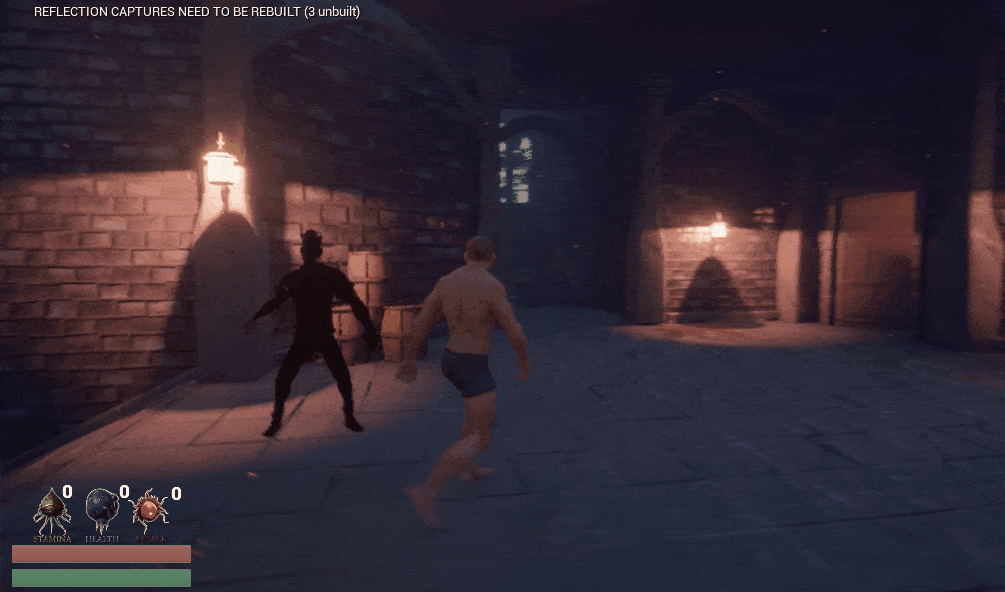
Birth-canal leading to lighthouse weenie. The narritive goal of the level is to leave on a boat.
Second sight of lighthouse weenie. Middle of the level.
At end of level you approach the lighthouse.

Early whitebox tried to communicate that B would lead to C. In later stages we made C have more similarities like their lighting to communicate that B connects to C.

Further into the level we are back in the big round room. Now the player can see the goal. During playtest session I would continuously monitor how player's would navigate and ask if they ever felt lost.
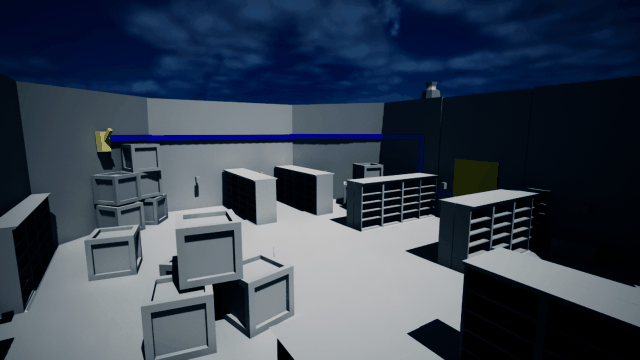
Early room that combines jumping and interacting with lever (crystal)

After multiple playtests this became the final whitebox version before art pass
Pacing and rewards in a souls-like game.
It was important that the game did not feel like a combat simulator,
going from to room of combat encounters. The player should
have the experience feel rewarding and fun in other ways,
and switch up the pace from constant combat encounters.
Building an intriguing world: We aimed to create a cool,
immersive world that feels alive and interesting.
This meant paying attention to details and stories to make
the game world a place players would want to explore.
Reward vistas: I placed beautiful and unique
spots in the game for players to discover, rewarding their
progress or curiosity. These spots were like little visual treats,
giving players a nice break and a sense of accomplishment.
Puzzle encounters: To diversify the gameplay experience,
I designed simple puzzles. These were intentionally quite simple,
as their primary function was to inject a change of pace,
contribute to world-building, and cleverly hint at upcoming areas.
Secret treasure chests: Within Fleshscape, character progression
wasn't tied to defeating enemies. Instead, finding secret treasure
chests provided stat upgrades. This approach aimed to encourage
exploration, enabling players to discover more about the game's
world while being rewarded for their efforts. The game's essence is
rooted in the player's ability to succeed purely through improving
their own skills, therefore finding chests was not required to win.
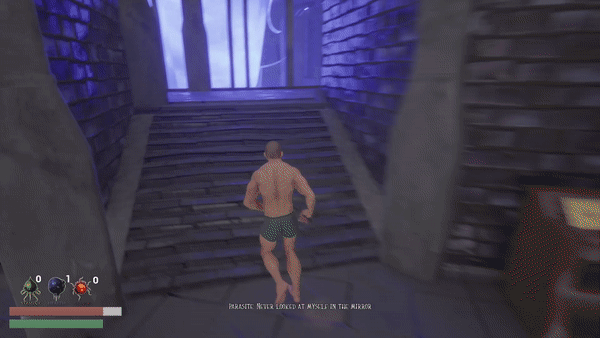

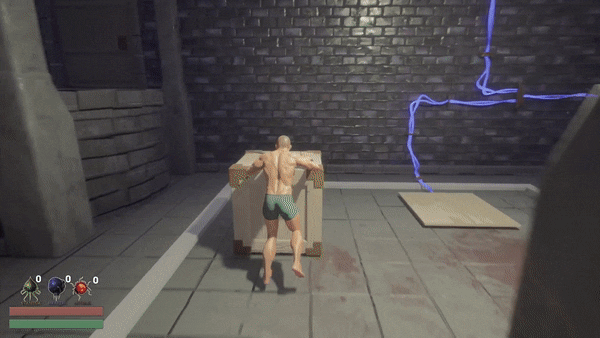
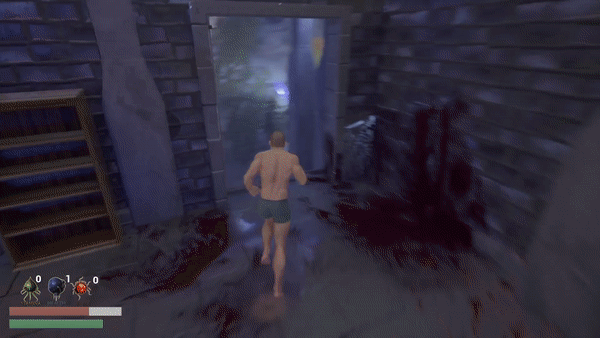
Using blueprints I would design puzzles, prototypes and miscellaneous things.
One of which being this sequence of showing these informative billboard texts and letting the player break the planks. Tech artists could later add their own particle effects as desired.
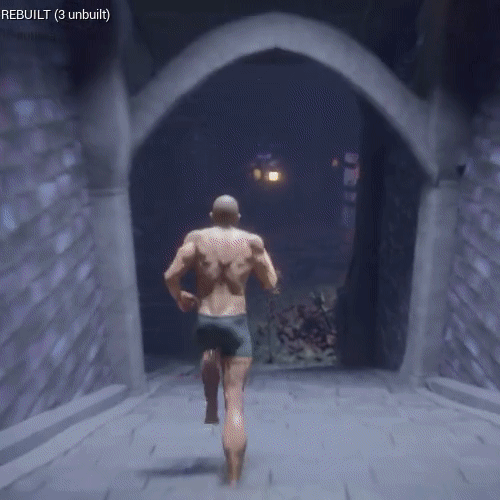



Blueprints